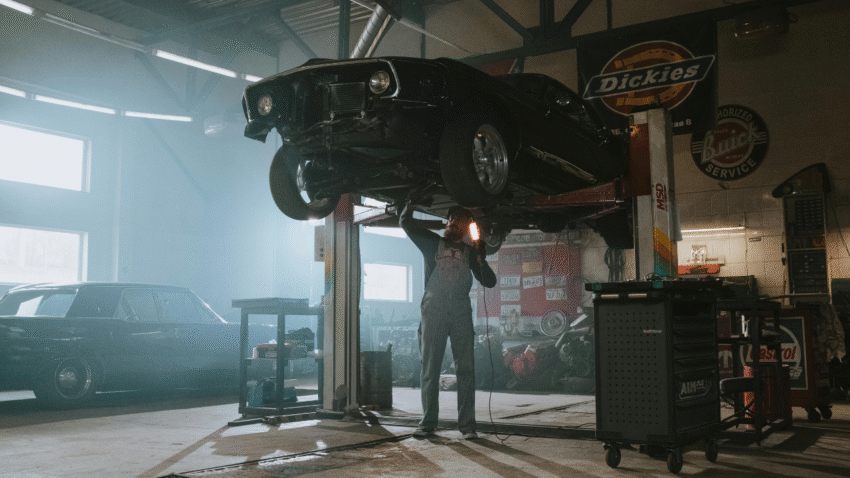Introduction
When winter hits, your garage can become a major source of heat loss, drafts, and moisture problems if it’s not properly sealed. Learning how to weatherproof your garage for winter helps keep the cold air out, the warm air in, and protects your vehicles, tools, and stored items from damage. The process doesn’t require a huge budget—just a strategic approach and a few home improvement supplies.
Why Weatherproofing Your Garage Matters in Winter
A garage that isn’t winter-ready can cause more problems than you might think:
- Energy Savings – Reduces heat loss, lowering utility bills.
- Protects Belongings – Prevents freezing damage to tools, liquids, and equipment.
- Improves Comfort – Makes the garage more usable as a workspace in cold months.
- Prevents Moisture Damage – Keeps snow, ice, and condensation from causing rust or mold.
By combining sealing, insulation, and proper ventilation, you can transform your garage into a warmer, more efficient space for the winter season.
Step-by-Step Guide to Weatherproofing Your Garage for Winter
1. Inspect and Seal the Garage Door
The garage door is the largest potential entry point for cold air.
- Check Weatherstripping – Look at the rubber seal along the bottom of the door. Replace if it’s cracked, brittle, or missing.
- Install Side and Top Seals – Foam or vinyl seals close the gaps along the door frame edges.
- Adjust Door Alignment – Ensure the door closes flush against the floor and frame to minimize drafts.
Tip: Use a flashlight test—turn off the garage lights and check for light coming in around the door.
2. Insulate the Garage Door Panels
Insulating the panels adds another layer of defense against the cold.
- Use pre-cut garage door insulation kits (foam board or reflective insulation).
- Secure panels with adhesive or clips according to manufacturer instructions.
- Choose insulation with a decent R-value (R-8 or higher) for colder climates.
3. Seal Windows and Gaps
Even small gaps can let in a surprising amount of cold air.
- Apply weatherstripping or caulk around window frames.
- Use clear plastic window insulation film to create an extra thermal barrier.
- Seal cracks around the garage’s exterior walls with silicone caulk.
4. Insulate the Walls and Ceiling
If you use your garage as a workshop or need to protect temperature-sensitive items, wall and ceiling insulation is key.
- Fiberglass Batts – Affordable and effective for unfinished walls.
- Foam Board Insulation – Good for adding insulation over existing walls.
- Spray Foam – Seals irregular gaps and adds insulation in one step.
Don’t forget to insulate the ceiling, especially if there’s a room above the garage.
5. Protect the Garage Floor
Cold concrete floors can contribute to heat loss and create uncomfortable working conditions.
- Add a rubber floor mat for insulation and traction.
- Install interlocking floor tiles for a more permanent solution.
- Seal the concrete to prevent moisture absorption from snow and ice melt.
6. Install a Door Sweep on Entry Doors
If your garage has a side or back entry door, install a rubber or brush-style door sweep to block drafts from coming in under the door. Pair this with weatherstripping around the sides and top.
7. Address Ventilation Needs
While sealing out cold air is important, good ventilation prevents moisture buildup that can lead to mold.
- Use a louvered vent or a small exhaust fan to maintain airflow without losing too much heat.
- Avoid blocking vents when adding insulation.
8. Store Temperature-Sensitive Items Safely
Move liquids like paint, cleaning chemicals, and adhesives to a climate-controlled area to prevent freezing. Keep tools in insulated cabinets or tool chests if your garage gets very cold.
9. Consider Supplemental Heating
If you spend a lot of time in the garage during winter, a small space heater or infrared heater can make it more comfortable. Always follow safety guidelines and keep heaters away from flammable materials.
Common Mistakes to Avoid
- Sealing Without Ventilation
- Problem: Leads to trapped moisture and mold growth.
- Solution: Maintain controlled airflow with vents or exhaust fans.
- Using the Wrong Type of Caulk
- Problem: Some caulks crack in freezing temperatures.
- Solution: Use silicone-based caulk rated for exterior, cold-weather use.
- Ignoring Small Gaps
- Problem: Even tiny openings can cause significant heat loss.
- Solution: Inspect carefully and seal all openings, including around pipes and outlets.
- Skipping Garage Door Maintenance
- Problem: A poorly aligned door can let in cold air despite new seals.
- Solution: Adjust hinges and rollers for a snug fit.
- Overheating Without Insulation
- Problem: Wastes energy and increases bills.
- Solution: Insulate first before adding a heater.
Extra Garage Tips & Hacks
- Magnetic Covers for Metal Doors – Easy-to-remove insulation panels for winter.
- Foam Pipe Insulation – Prevents water lines in the garage from freezing.
- Reflective Insulation on the Back of the Garage Door – Boosts heat retention while reflecting cold away.
For more seasonal preparation, check out our guide on organizing your garage before winter so you can combine weatherproofing with decluttering for maximum efficiency.
Conclusion
Weatherproofing your garage for winter is one of the most cost-effective home improvement projects you can do before the cold sets in. By sealing drafts, insulating surfaces, and maintaining proper ventilation, you can protect your belongings, reduce heating costs, and enjoy a more comfortable garage all season long.
Pro Tip: Start your weatherproofing in early autumn so you have time to test and adjust before the first freeze. Bookmark this guide and use it as your go-to checklist each year.
